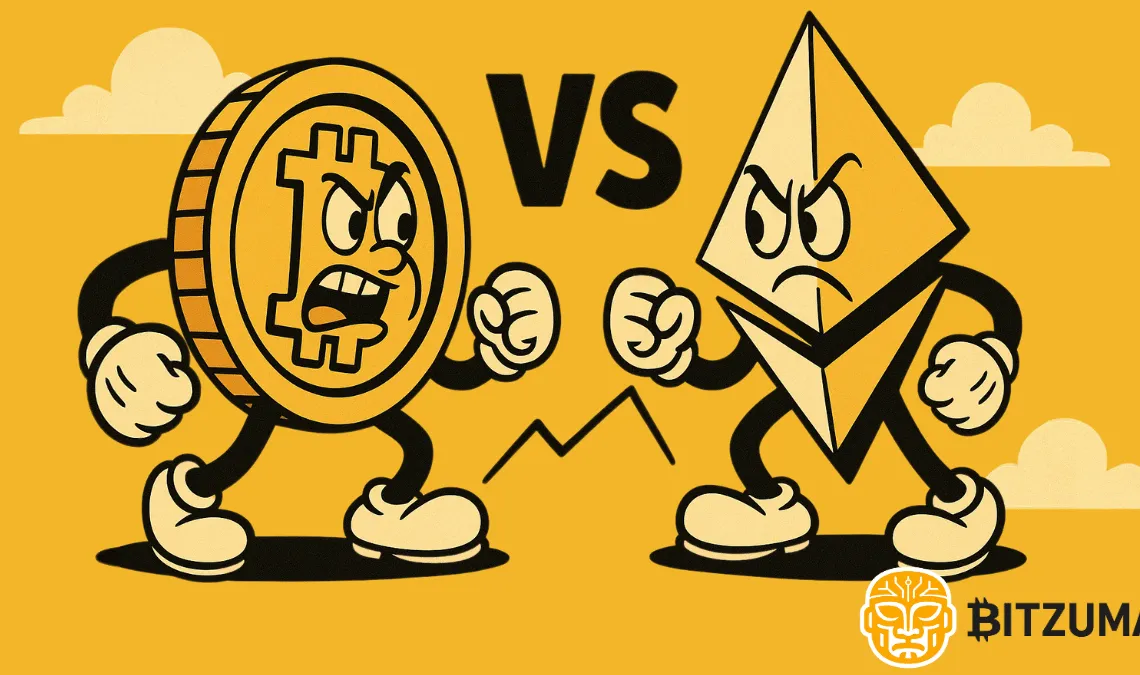It’s the age-old crypto debate. Two giants. Two visions. Bitcoin and Ethereum have dominated headlines, portfolios, and debates for years — and as the 2025 bull run kicks into gear, the question resurfaces: Which of the two is the better long-term investment?
The answer isn’t as simple as picking a winner. These two blockchains serve different purposes, attract different types of investors, and offer unique advantages (and risks). So instead of calling a winner, let’s take a deeper look at what each brings to the table — and how they fit into today’s evolving market.
Bitcoin: The Digital Gold of the Crypto Era
Bitcoin was the first, and it still carries the weight of being the original decentralized currency. With its hard supply cap of 21 million and its narrative as a hedge against inflation, BTC is increasingly seen as a store of value — much like gold in the traditional finance world.
In 2025, Bitcoin has become more institutionally accepted than ever. The approval of spot ETFs in the U.S. and growing adoption by major firms like BlackRock and Fidelity have helped BTC cement its place in the mainstream. It’s simple, predictable, and increasingly liquid.
But it’s also intentionally limited. Bitcoin’s purpose is to be money — and nothing more. Unlike Ethereum, there’s no real ecosystem of apps, smart contracts, or NFTs built on top of Bitcoin. That’s by design, but it also means the scope for growth is somewhat narrower.
Ethereum: The Foundation of Web3 Innovation
If Bitcoin is digital gold, Ethereum is programmable money. It introduced smart contracts to the blockchain world and now powers thousands of decentralized applications — from DeFi protocols and NFT marketplaces to DAOs and identity platforms.
Since moving to proof of stake, Ethereum has dramatically improved its sustainability and introduced a deflationary mechanism that burns a portion of ETH during high activity. More importantly, it’s become a hub for developers, builders, and creators pushing the boundaries of what blockchain can do.
Ethereum’s flexibility allows it to evolve constantly. From Layer 2 scaling solutions to tokenized real-world assets and AI integrations, the Ethereum ecosystem is expanding fast. That makes it exciting, but also more complex and volatile.
Bitcoin vs Ethereum: At a Glance
| Feature | Bitcoin (BTC) | Ethereum (ETH) |
| Primary Use Case | Digital Gold / Store of Value | Decentralized Applications (dApps) |
| Launch Year | 2009 | 2015 |
| Consensus Mechanism | Proof of Work | Proof of Stake (since The Merge) |
| Max Supply | 21 Million | No cap, but ETH can now be deflationary |
| Ecosystem Scope | Payments, store of value | DeFi, NFTs, gaming, governance |
| Upgrade Pace | Conservative | Fast-moving innovation |
Historical Performance: How Have They Performed in Past Bull Runs?
A look at previous market cycles reveals an interesting dynamic. Bitcoin leads early in bull markets as a “safe bet,” but Ethereum often catches up—and sometimes surpasses—in the second half.
| Bull Market | Bitcoin ROI | Ethereum ROI | Context |
| 2015–2017 | ~75x | ~1125x | ETH rode the ICO boom |
| 2019–2021 | ~13x | ~43x | ETH surged on DeFi + NFT trends |
| 2024–2025 | TBD | TBD | Too early, but ETH ecosystems growing |
The image below compares Bitcoin’s and altcoins’ price performance across two major bull cycles: 2015–2017 and 2019–2021.
In the 2015–2017 bull run, Bitcoin gained roughly 75x, while altcoins exploded with a staggering 1125x, especially in the second half of the cycle. Similarly, in 2019–2021, BTC rose around 13x, but altcoins still outpaced it with a 43x return.
This trend has held up consistently:
- In the first half of each bull market, Bitcoin and alts tend to grow at similar rates.
- In the second half, altcoins — including Ethereum — usually outperform as risk appetite increases and capital flows into more speculative projects.
Ethereum, while not a traditional “alt” anymore, often follows this pattern. It tends to ride closely behind Bitcoin early in the cycle and then gains momentum as developers build and user adoption grows.
What this shows is that while Bitcoin often leads the charge, Ethereum and other Layer 1s tend to catch up — and sometimes surpass it — as the bull run matures.
Adoption, Ecosystems, and Real-World Use Cases
Bitcoin remains dominant in terms of institutional adoption. It’s now widely held by asset managers, pension funds, and corporate balance sheets. Its simplicity is part of its appeal.
Ethereum, however, is where the action happens. It hosts over 60% of total value locked in DeFi and continues to be the go-to chain for new innovation. Its vibrant Layer 2 ecosystem (like Arbitrum, Optimism, and Base) is solving past scalability issues, while developers explore integrations with AI, gaming, and beyond.
Both ecosystems are strong, but they serve fundamentally different purposes. Bitcoin is money. Ethereum is infrastructure.
Key Risks to Consider
Bitcoin’s biggest risks stem from its lack of flexibility and environmental concerns — even if it’s slowly being addressed via Layer 2s and greener mining operations. Ethereum, on the other hand, faces risks around competition, governance fragmentation across Layer 2s, and the sheer complexity of its ecosystem.
Neither is risk-free — but both have shown resilience and long-term potential.
Final Thoughts: BTC or ETH?
There’s no one-size-fits-all answer. Bitcoin and Ethereum complement each other more than they compete.
- Bitcoin offers unmatched security and simplicity—perfect as a macro hedge or digital gold.
- Ethereum offers innovation and utility—ideal if you believe in the future of dApps, NFTs, and DeFi.
Most serious crypto investors hold both. How you weigh them depends on your risk appetite, market outlook, and personal conviction.
What to Read Next
- 2025 Crypto Predictions from Top Analysts: What the Data Suggests
- Web3 Gaming in 2025: The Future of Play-to-Earn, Interoperability, and Tokenized Economies

















